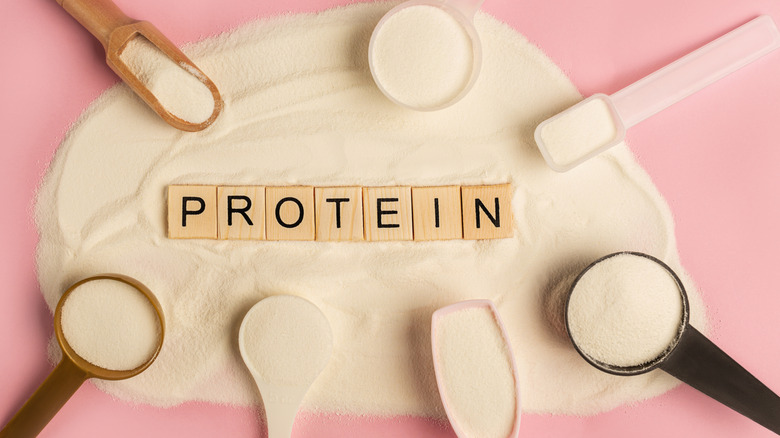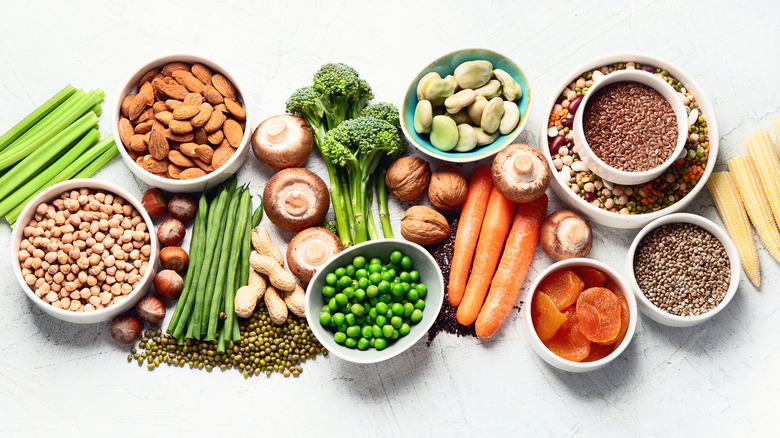The Big Difference Between Whey Protein And Plant-Based Protein
Among the many varieties of protein on supermarket shelves, you will find whey and plant-based as options. While both will add protein to your diet, they have differences worth noting.
Whey protein is made from proteins found in milk. According to Cleveland Clinic, it is considered a complete protein because it contains all nine of the essential amino acids your body needs. Whey is made by adding enzymes to milk while making cheese, which causes it to curdle. The curds are removed to make cheese, and the watery substance left behind is whey protein. This compound contains lactose and fat, and most of the time, it is pasteurized to remove bacteria.
Manufacturers process whey in three different ways. Whey concentrate is used in many protein shakes, bars, and other products. Whey isolate is high in protein with low levels of fat or lactose. Hydrolyzed whey protein is easy to digest and is used in many infant products and medical supplements (via Cleveland Clinic).
Plant-based protein doesn't come from animals
As the name suggests, plant-based protein comes from plants, and many are suitable for vegetarian and vegan diets. The Spruce Eats explains that many plants contain protein, including beans, legumes, and seeds. You can even find small amounts of protein in mushrooms, kale, asparagus, and broccoli. Texturized vegetable protein, such as tofu, seitan, and tempeh, is used to make plant-based meat products. Healthline explains that getting a wide variety of plant-based proteins is essential for getting the nutrition you need. That said, protein powder blends can help provide essential amino acids to give your diet an extra boost.
Speaking of blends, protein powders are generally made from grains, legumes, peas, hemp, pumpkin seeds, sunflower seeds, brown rice, soy, chia seeds, and sacha inchi seeds, according to Healthline. Like any whey-based protein powders, you can add plant-based protein to smoothies, water, and non-dairy milk.


